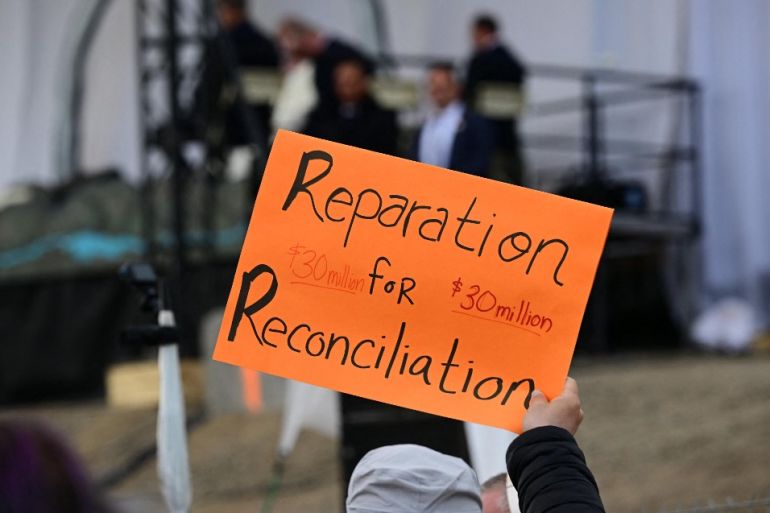Vatican returns 62 items taken from Indigenous communities in Canada
Pope Leo gifts the objects to the Canadian Conference of Catholic Bishops after meeting their representatives.

By News Agencies
Published On 15 Nov 202515 Nov 2025
Save
The Vatican has handed back 62 Indigenous artefacts to Canada’s Catholic bishops, framing the move as “a concrete sign of dialogue, respect and fraternity” after years of pressure from Indigenous communities seeking the return of cultural heritage removed under colonial rule.
The items were formally transferred on Saturday during a meeting at Vatican City between Pope Leo and representatives of the Canadian Conference of Catholic Bishops, including its president, Bishop Pierre Goudreault.
Recommended Stories
list of 4 itemsend of list
The bishops said they would pass the artefacts “as soon as possible” to Canada’s National Indigenous Organisations, which will then oversee their return to their communities of origin.
The objects were sent to Rome nearly a century ago for a vast 1925 Vatican exhibition curated by Pope Pius XI, who sought to display the reach of Catholic missions and the cultures they encountered. Many pieces later became part of the Missionary Ethnological Museum before being absorbed into the Vatican Museums in the 1970s.
The Vatican maintains the items were “gifts” to Pius XI.
But Indigenous groups and historians have long disputed that claim, arguing that such offerings could not be deemed voluntary in an era when Catholic missionaries held immense influence over Indigenous lives.
‘Cultural genocide’
In those years, Catholic religious orders were helping to enforce the Canadian government’s forced assimilation policy of eliminating Indigenous traditions, which Canada’s Truth and Reconciliation Commission has called a “cultural genocide”.
Advertisement
Part of that policy included confiscating items used in Indigenous spiritual and traditional rituals, such as the 1885 potlatch ban that prohibited the integral First Nations ceremony. Those confiscated items ended up in museums in Canada, the United States and Europe, as well as private collections.
Momentum for the objects’ return grew after the late Pope Francis met Indigenous delegations in 2022 and delivered a historic apology for the church’s role in residential schools.
During that visit, Indigenous leaders viewed several items in the Vatican’s collection, including wampum belts, an Inuit kayak, masks and weapons, and requested their return. Francis later said he supported returning such objects “where it’s necessary to make a gesture”.
The Vatican’s handover marks a century since the 1925 exhibition that first brought the items to Rome.
A joint statement from the Vatican and the Canadian bishops described the transfer as “an act of ecclesial sharing”, adding that Canada’s Catholic leadership is committed to ensuring the artefacts are “properly safeguarded, respected and preserved” until they are reunited with their rightful custodians.
